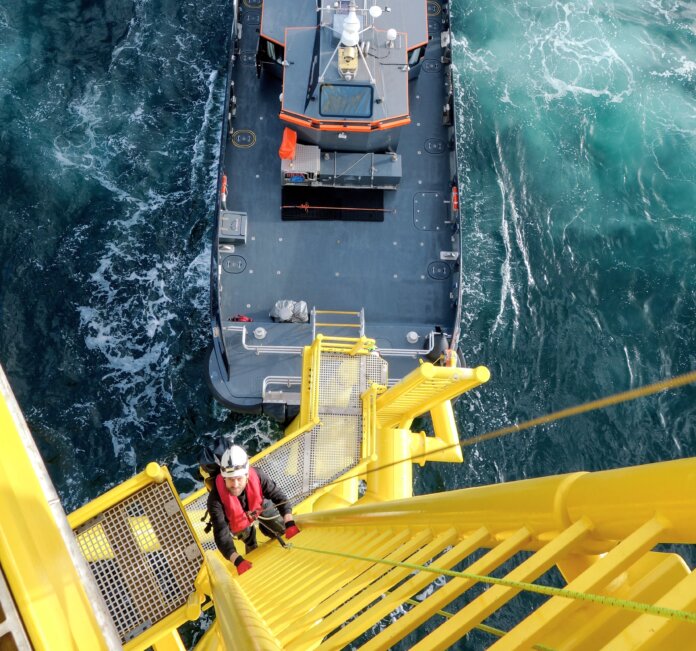Engineering consultancy firm Wood Thilsted has incorporated automated structural analysis into its process for designing boat landings for offshore wind turbines.
Boat landings consist of ladders, fenders, pins and other components that need to be designed and tested in concert.
“The challenge with the design is that we have a set of requirements with different load cases, and these are contradicting,” says Louise Bendtsen, senior structural engineer at Wood Thilsted. “I can spend a lot of time optimizing one aspect of the design and then figure out that it does not work for another design case. As a designer, this means that you need to have a broader perspective on the design as a whole.”
The COMSOL Multiphysics software chosen by the company helps it evaluate the performance of its offshore boat landing designs, with the FEA software used to model the governing load cases of any potential solution: the ultimate limit state (ULS) wave, representing the maximum peak forces that a boat landing is expected to experience throughout its projected lifespan, and the fatigue limit state (FLS) wave, representing the cumulative impact of 30 years of waves and crew transfers.
To further validate potential designs, the company utilizes its Primary Steel team for feedback on stress concentration factors and the limits of the materials being used. To automate processes such as applying loads, setting material properties and choosing the analysis type, the team links the COMSOL software with the MATLAB software.
A library of custom geometry parts saved in COMSOL Multiphysics allows Wood Thilsted to use the software’s functionality for reproducing the complex geometries of saved designs and making them parametric. This way, the company is able to build new boat landing designs by swapping out one portion of a design for another.




